Abstract
1. A maintained inflation of the lungs caused a reflex reduction in total systemic vascular resistance in anaesthetized dogs under conditions in which the systemic circulation was perfused at constant blood flow and the arterial blood PO2 and PCO2 were maintained constant.
2. The fall in systemic arterial perfusion pressure evoked by inflation of the lungs was accompanied by an increase in blood flow to the lower limbs and a reduction in their calculated vascular resistance. Since the fall in resistance occurred when the limb was perfused either at constant pressure or at constant blood flow, it must be due to vasodilatation.
3. Lung inflation caused vasodilatation in skin, muscle, and in the splanchnic vascular bed. The responses in vertebral circulation were, however, small and variable.
4. The vasodilator responses in the vascular territories studied were reflex in nature, being abolished by cutting the cervical vagosympathetic nerves, in which run the afferent fibres, or by interrupting the sympathetic pathways to the blood vessels.
5. In the intact limb, muscle, skin and splanchnic vascular bed, the vasodilator responses to lung inflation were unaffected by atropine or propranolol, but were abolished by hexamethonium, dibenyline and bretylium tosylate, indicating that they were due predominantly to a reduction in the activity in sympathetic adrenergic vasoconstrictor fibres.
Full text
PDF


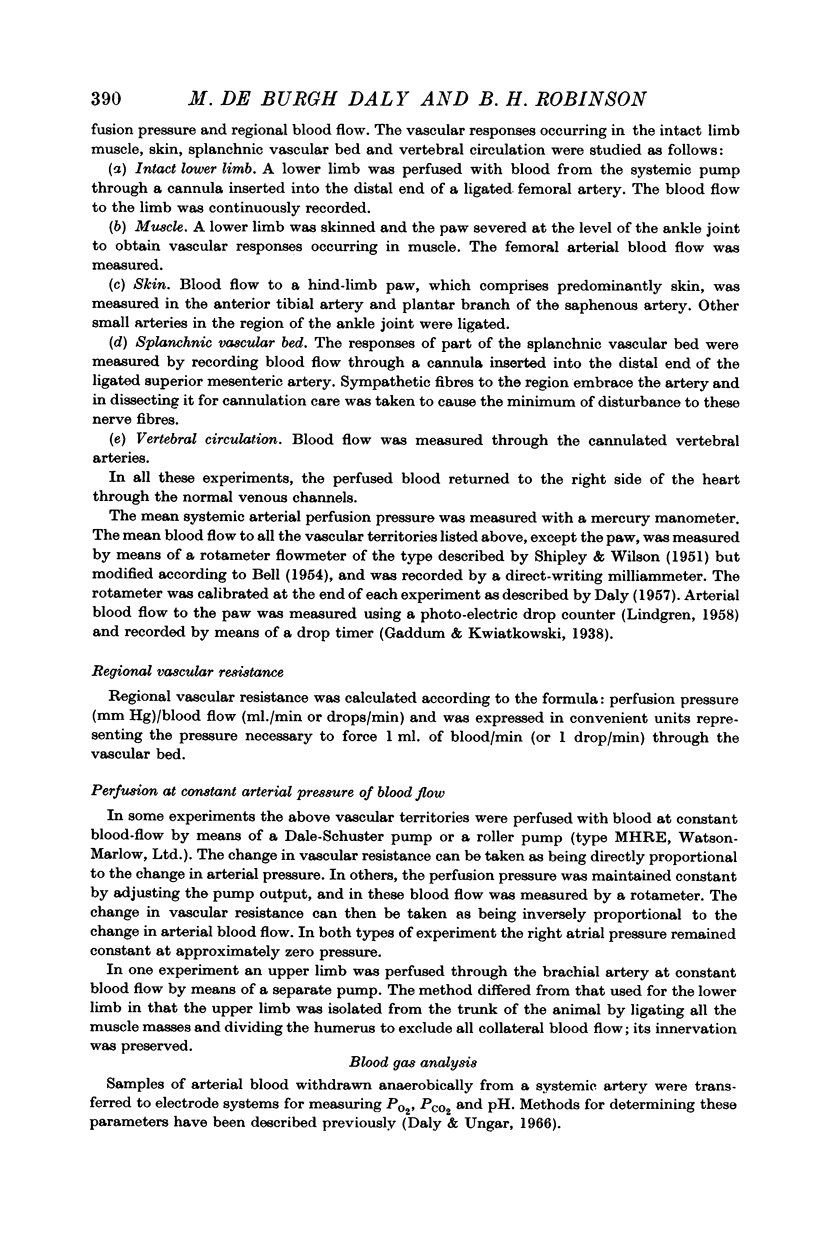

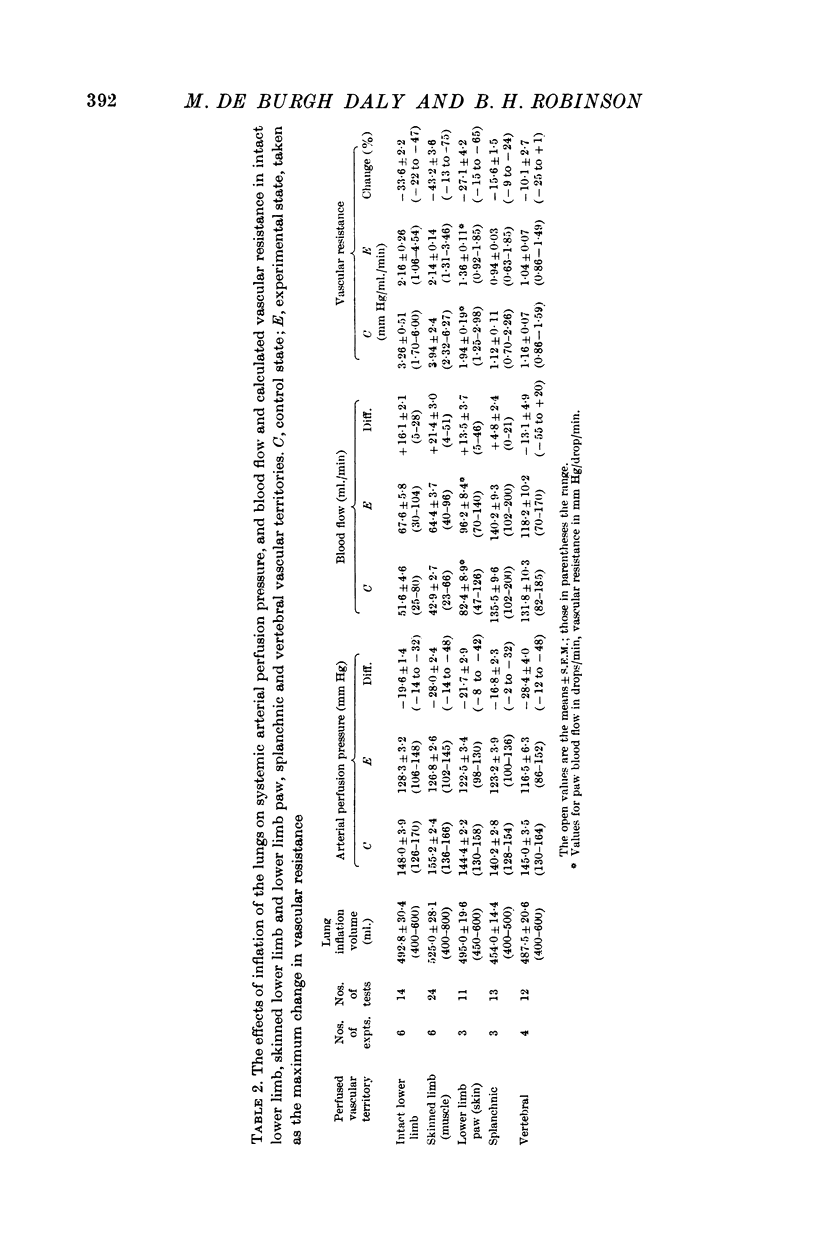

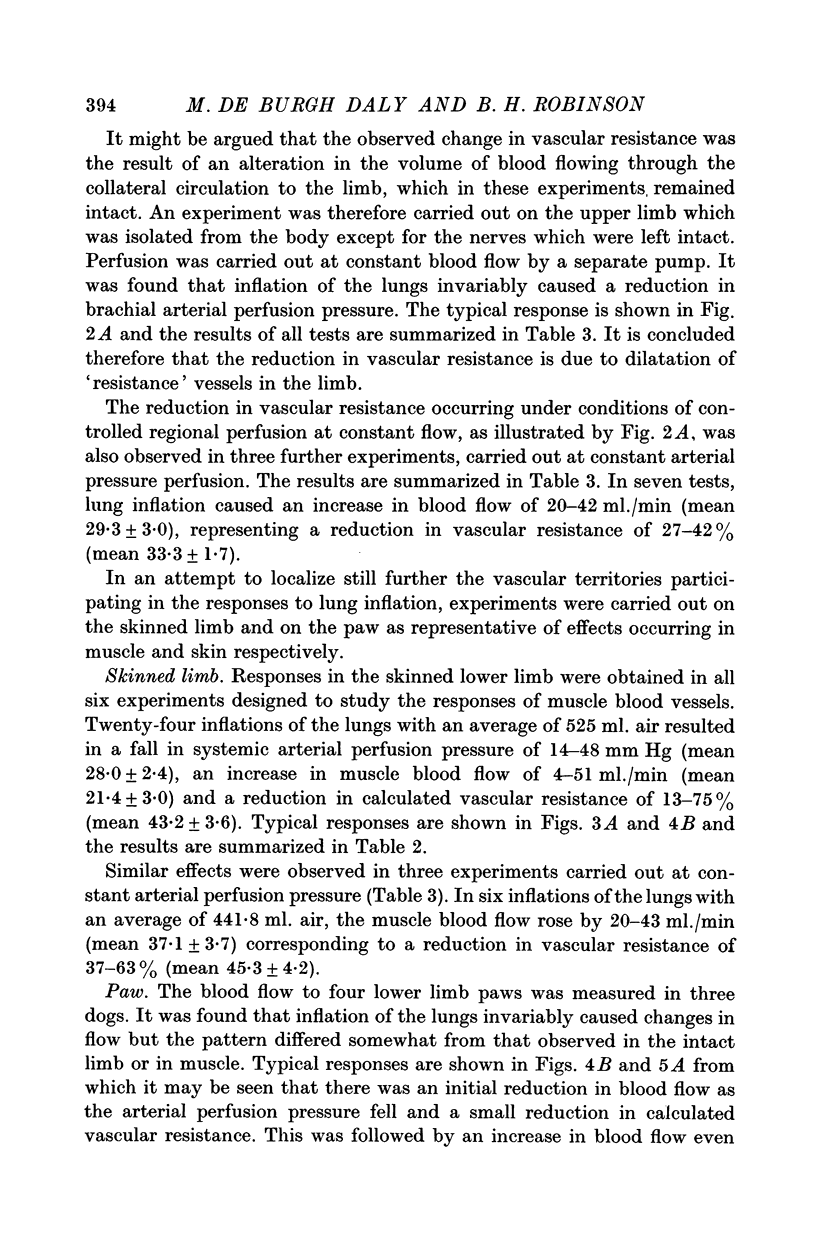
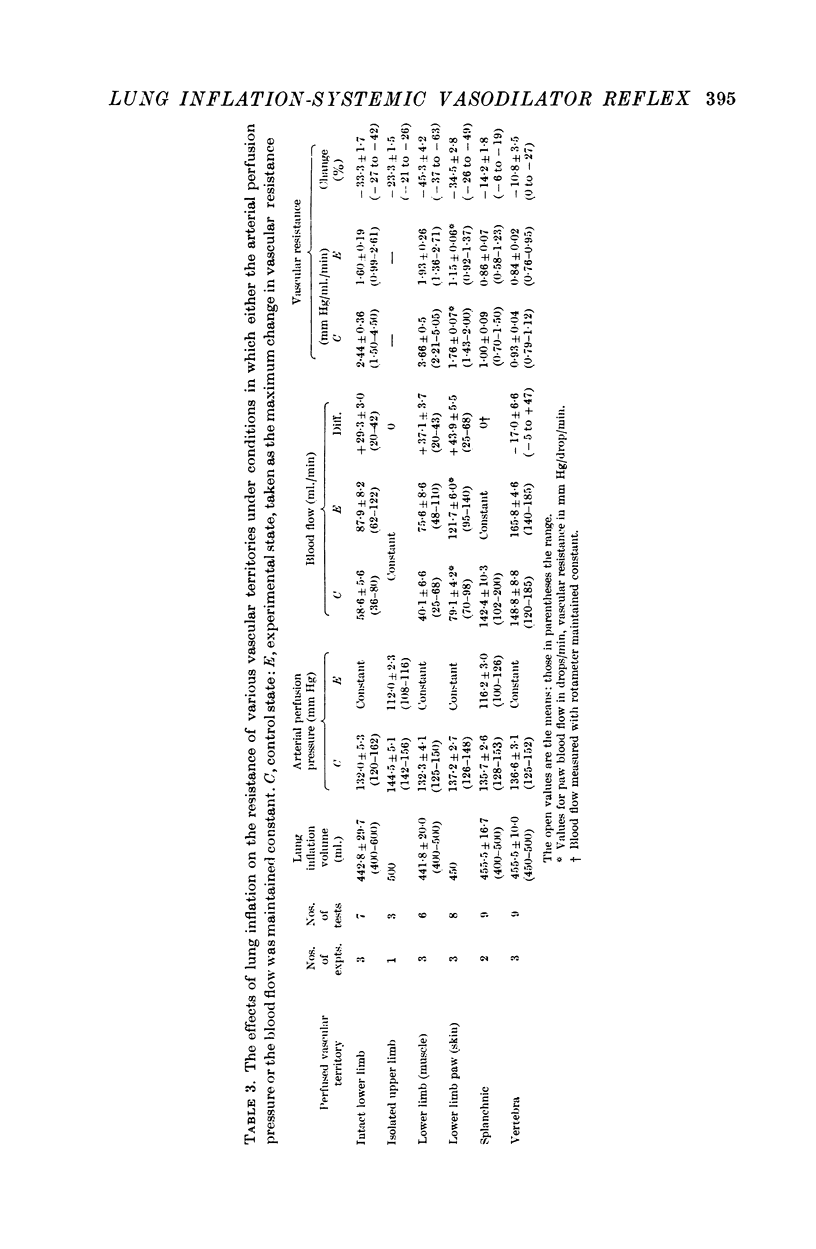


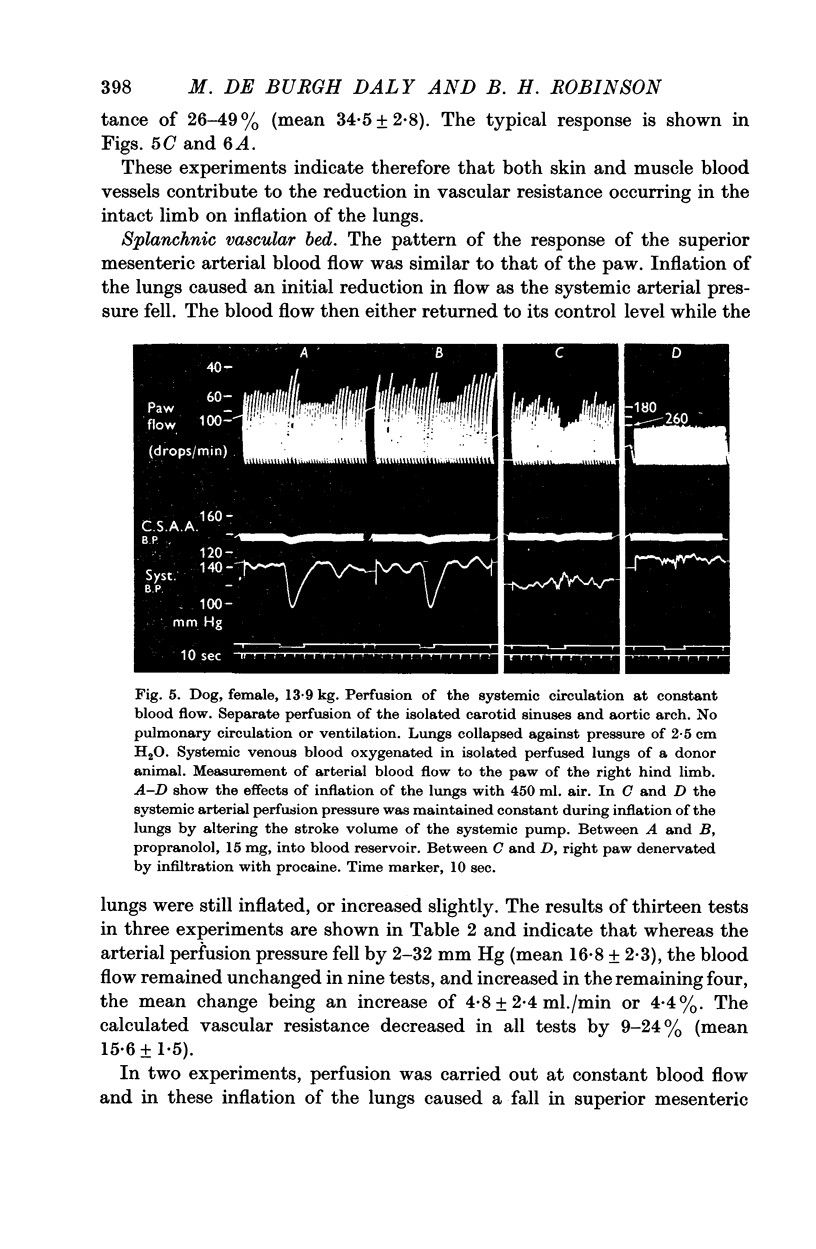
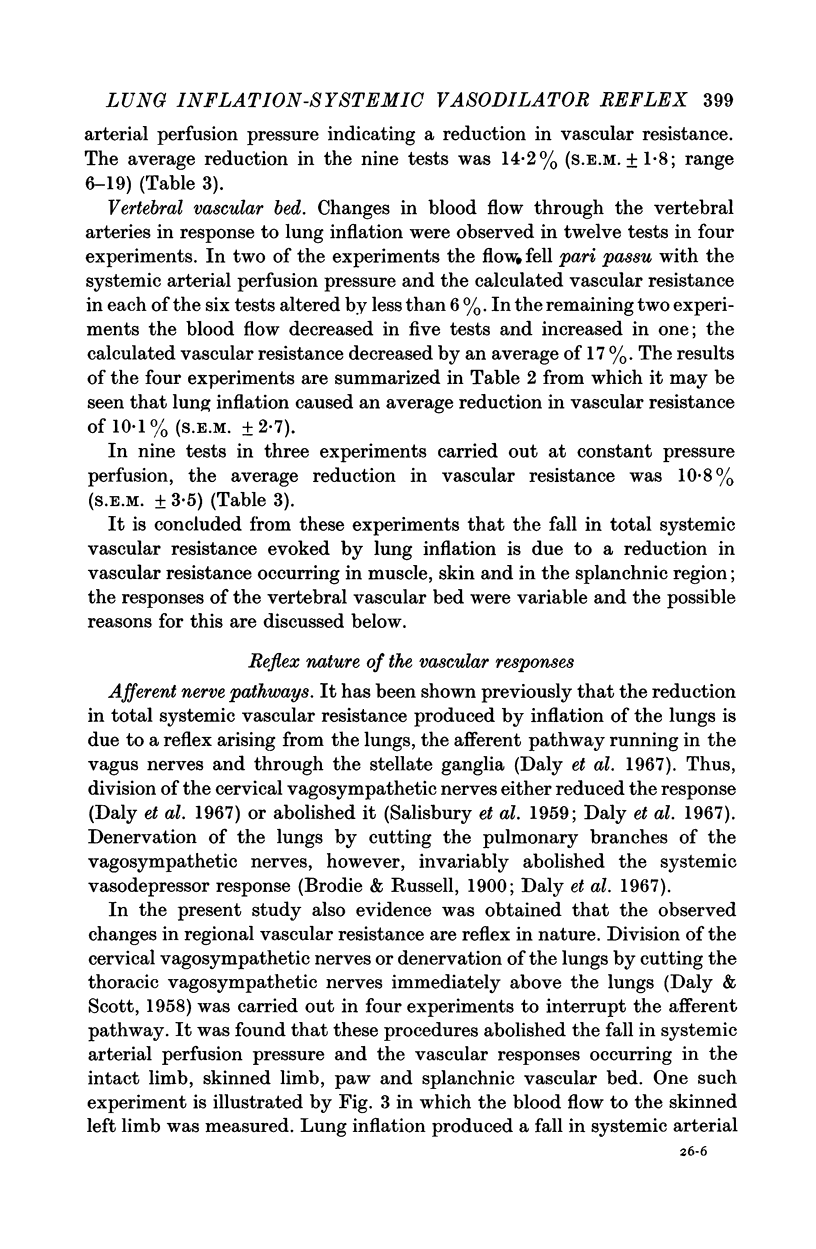
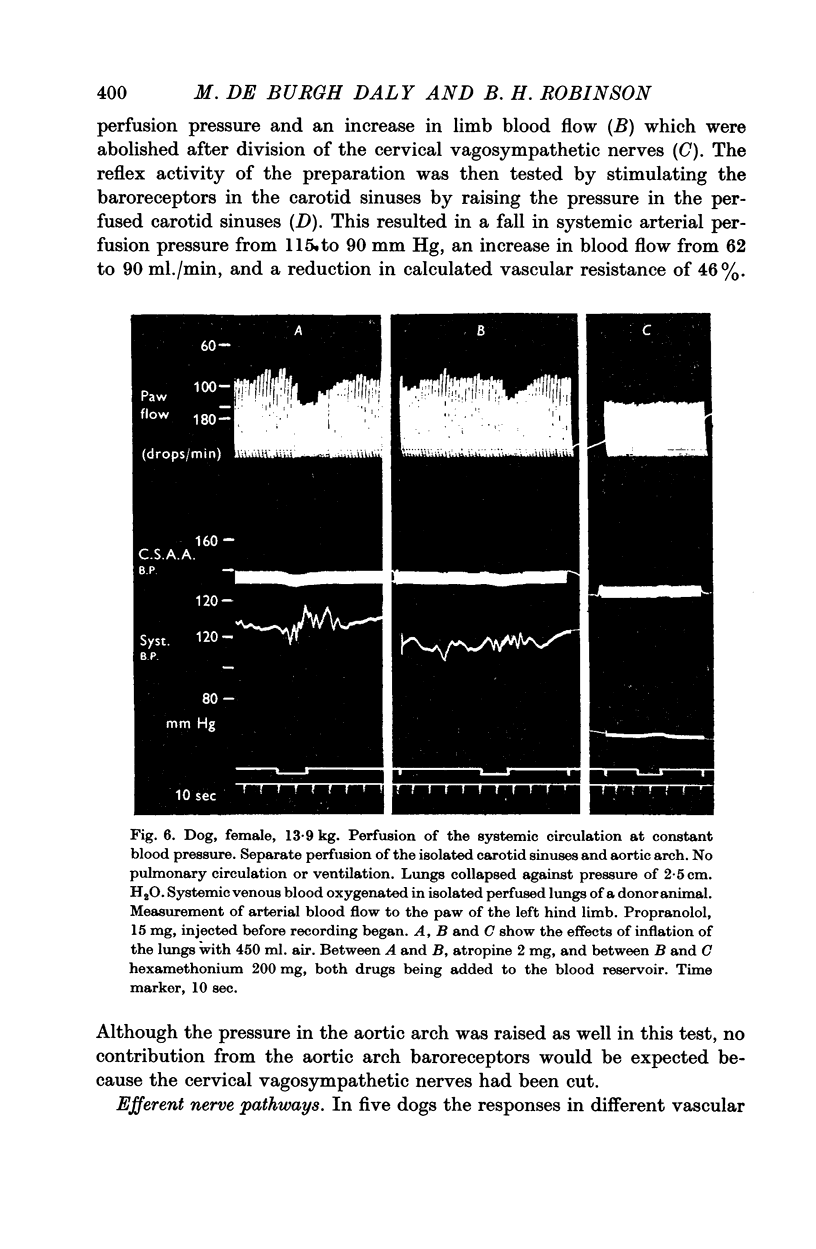
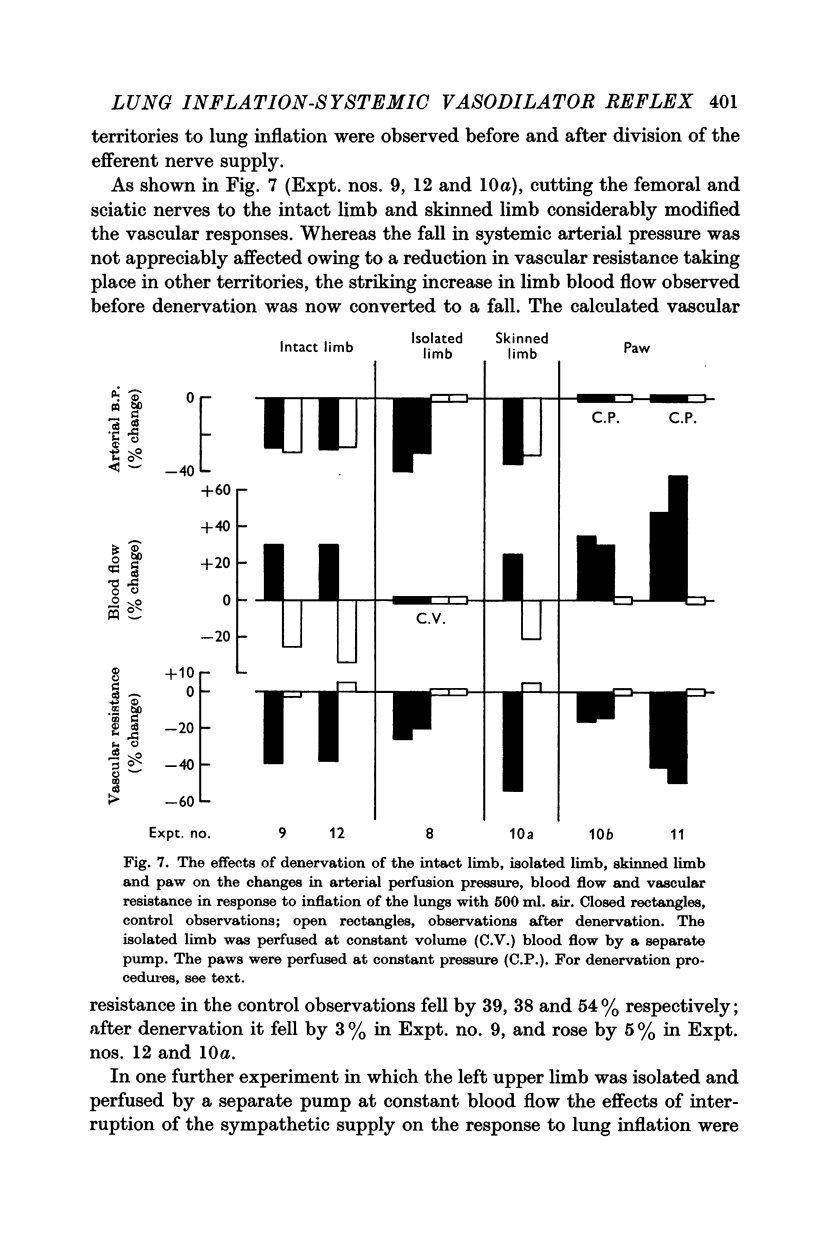

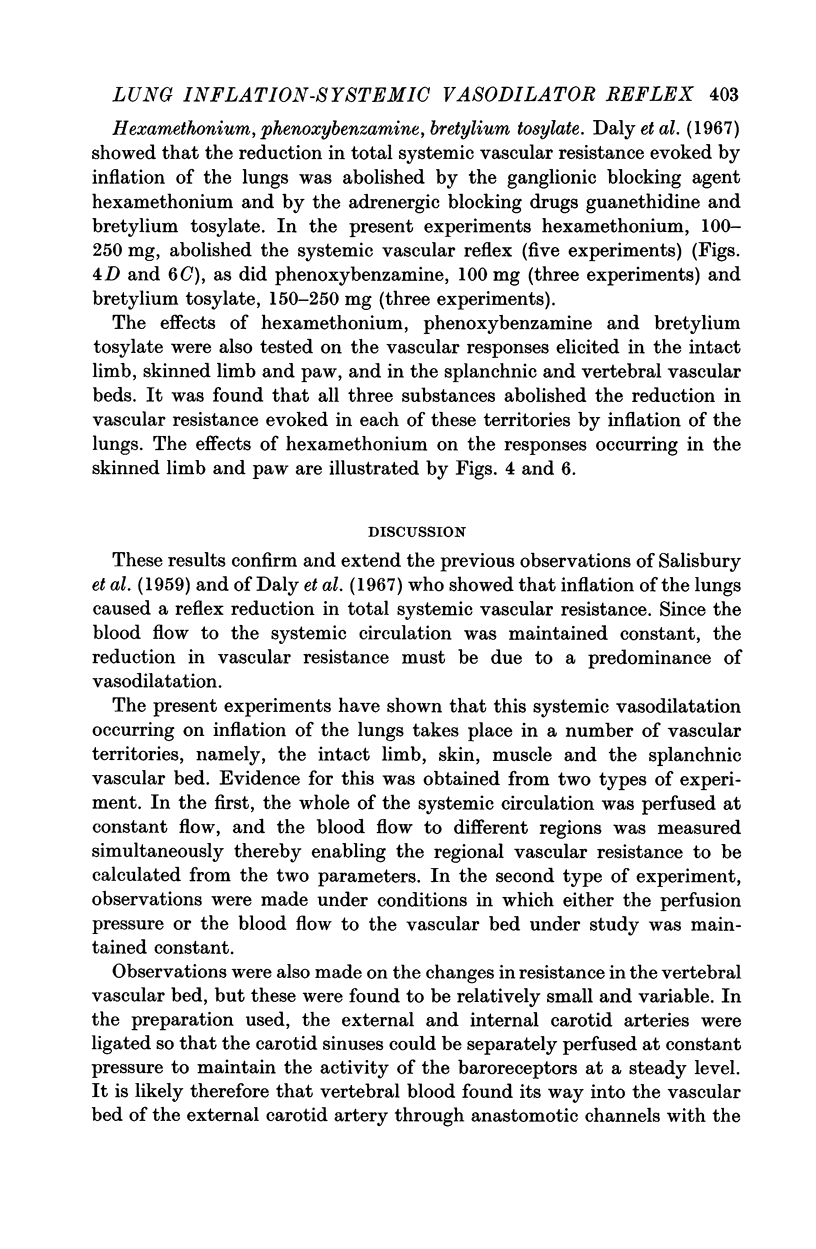

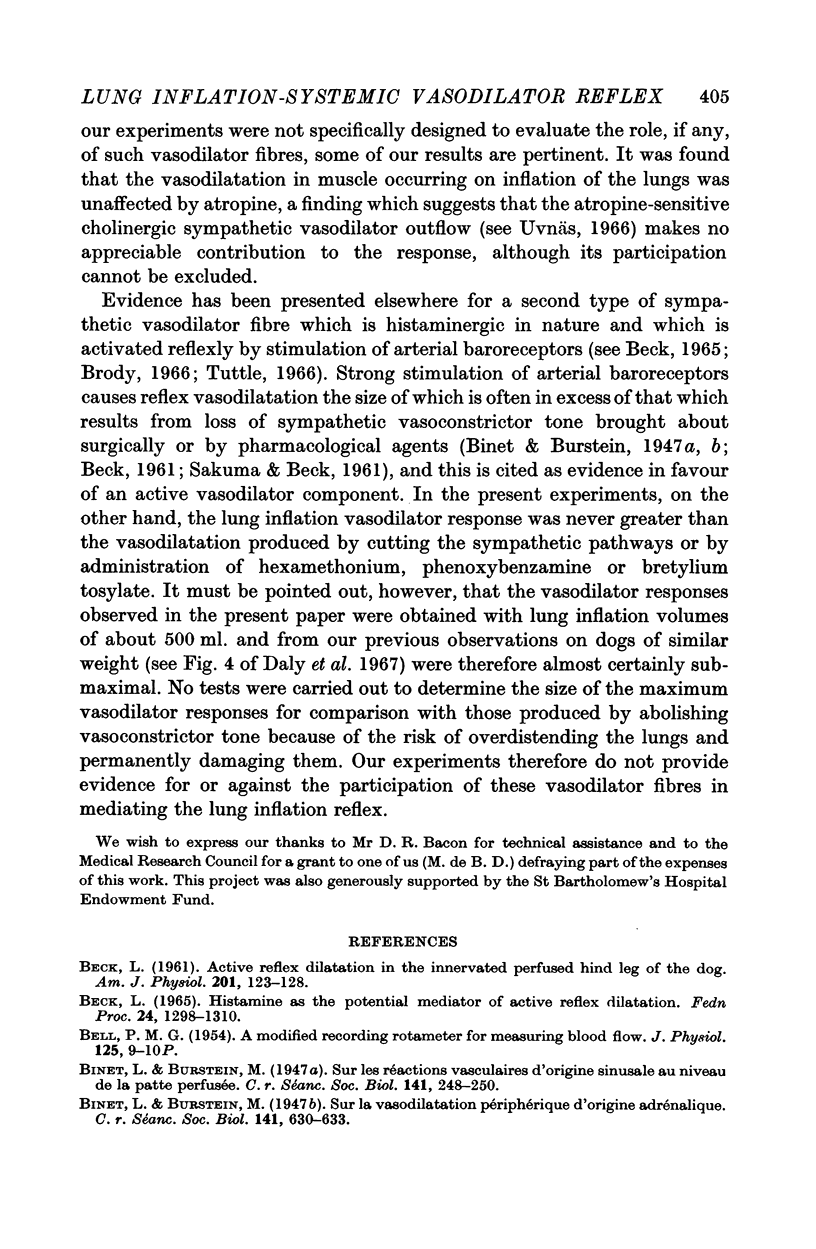

Selected References
These references are in PubMed. This may not be the complete list of references from this article.
- BECK L. Active relfex dilatation in the innervated perfused hind leg of the dog. Am J Physiol. 1961 Jul;201:123–128. doi: 10.1152/ajplegacy.1961.201.1.123. [DOI] [PubMed] [Google Scholar]
- Beck L. Histamine as the potential mediator of active reflex dilatation. Fed Proc. 1965 Nov-Dec;24(6):1298–1310. [PubMed] [Google Scholar]
- Bouckaert J. J., Heymans C. On the reflex regulation of the cerebral blood flow and the cerebral vaso-motor tone. J Physiol. 1935 Jul 24;84(4):367–380. doi: 10.1113/jphysiol.1935.sp003287. [DOI] [PMC free article] [PubMed] [Google Scholar]
- Brodie T. G. On reflex cardiac inhibition. J Physiol. 1900 Dec 31;26(1-2):92–106. doi: 10.1113/jphysiol.1900.sp000824. [DOI] [PMC free article] [PubMed] [Google Scholar]
- Brody M. J. Neurohumoral mediation of active reflex vasodilatation. Fed Proc. 1966 Nov-Dec;25(6):1583–1592. [PubMed] [Google Scholar]
- CHUNGCHAROEN D., De BURGH DALY M., NEIL E., SCHWEITZER A. The effect of carotid occlusion upon the intrasinusal pressure with special reference to vascular communications between the carotid and vertebral circulations in the dog, cat and rabbit. J Physiol. 1952 May;117(1):56–76. [PMC free article] [PubMed] [Google Scholar]
- DALYMDE B., HAZZLEDINE J. L., HOWE A. REFLEX RESPIRATORY AND PERIPHERAL VASCULAR RESPONSES TO STIMULATION OF THE ISOLATED PERFUSED AORTIC ARCH CHEMORECEPTORS OF THE DOG. J Physiol. 1965 Mar;177:300–322. doi: 10.1113/jphysiol.1965.sp007593. [DOI] [PMC free article] [PubMed] [Google Scholar]
- DE DALY M B. The cardiovascular effects of anticholinesterases in the dog with special reference to haemodynamic changes in the pulmonary circulation. J Physiol. 1957 Dec 3;139(2):250–272. doi: 10.1113/jphysiol.1957.sp005889. [DOI] [PMC free article] [PubMed] [Google Scholar]
- DE DALY M. B., SCOTT M. J. The effects of stimulation of the carotid body chemoreceptors on heart rate in the dog. J Physiol. 1958 Nov 10;144(1):148–166. doi: 10.1113/jphysiol.1958.sp006092. [DOI] [PMC free article] [PubMed] [Google Scholar]
- Daly M., Ungar A. Comparison of the reflex responses elicited by stimulation of the separately perfused carotid and aortic body chemoreceptors in the dog. J Physiol. 1966 Jan;182(2):379–403. doi: 10.1113/jphysiol.1966.sp007828. [DOI] [PMC free article] [PubMed] [Google Scholar]
- De Burgh Daly M., Hazzledine J. L., Ungar A. The reflex effects of alterations in lung volume on systemic vascular resistance in the dog. J Physiol. 1967 Feb;188(3):331–351. doi: 10.1113/jphysiol.1967.sp008142. [DOI] [PMC free article] [PubMed] [Google Scholar]
- Gaddum J. H., Kwiatkowski H. The action of ephedrine. J Physiol. 1938 Oct 14;94(1):87–100. doi: 10.1113/jphysiol.1938.sp003664. [DOI] [PMC free article] [PubMed] [Google Scholar]
- JEWELL P. A. The anastomoses between internal and external carotid circulations in the dog. J Anat. 1952 Apr;86(2):83–94. [PMC free article] [PubMed] [Google Scholar]
- LINDGREN P. An improved method for drop recording of arterial or venous blood flow. Acta Physiol Scand. 1958 Feb 10;42(1):5–11. doi: 10.1111/j.1748-1716.1958.tb01536.x. [DOI] [PubMed] [Google Scholar]
- SAKUMA A., BECK L. Pharmacological evidence for active reflex dilatation. Am J Physiol. 1961 Jul;201:129–133. doi: 10.1152/ajplegacy.1961.201.1.129. [DOI] [PubMed] [Google Scholar]
- SALISBURY P. F., GALLETTI P. M., LEWIN R. J., RIEBEN P. A. Stretch reflexes from the dog's lung to the systemic circulation. Circ Res. 1959 Jan;7(1):62–67. doi: 10.1161/01.res.7.1.62. [DOI] [PubMed] [Google Scholar]
- SHIPLEY R. E., WILSON C. An improved recording rotameter. Proc Soc Exp Biol Med. 1951 Dec;78(3):724–728. doi: 10.3181/00379727-78-19196. [DOI] [PubMed] [Google Scholar]
- Tuttle R. S. Histaminergic component in the baroreceptor reflex of the pyramidal cat. Fed Proc. 1966 Nov-Dec;25(6):1593–1595. [PubMed] [Google Scholar]


